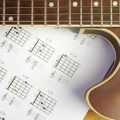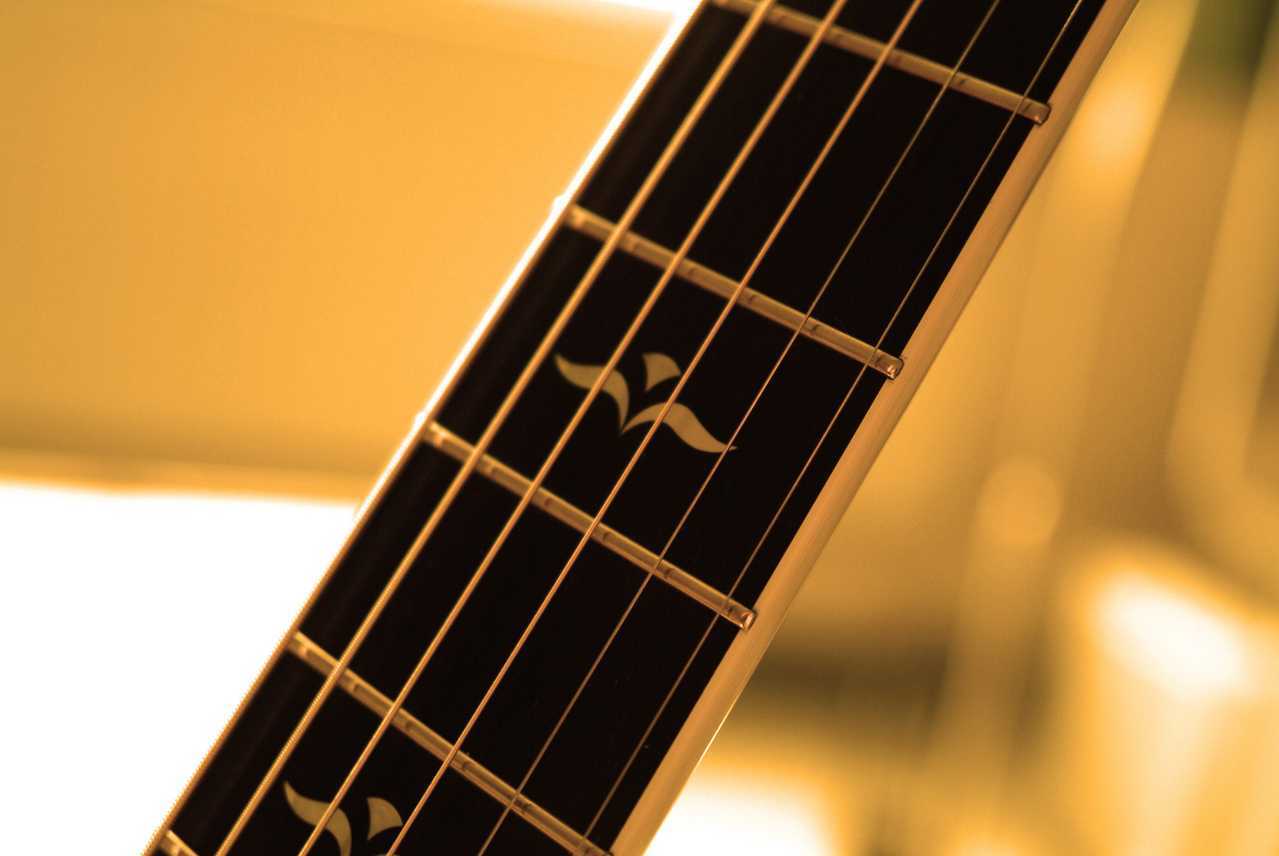For most new guitarists, there’s no better feeling than picking out a guitar from the music store and holding it for the first time. It’s an unforgettable experience that sticks with young children as well as adults for a lifetime. But this special feeling can quickly become overshadowed by the uncertainty that comes with not knowing how to get started when it comes to playing the guitar. Well, if this sounds like you, don’t fret! Or, do fret, but only once you’ve built the callouses up on your fingers. Wow, that was cheesy. Anyway, we’ve got some helpful tips for learning guitar that will help give you everything you need to get you started on this amazing instrument. We’ll start out at the very beginning by showing you how to play everything from open strings to chord progressions.
Know exactly what you’re working with
It’s a good idea to know what the guitar is and how it works before you start trying to learn how to play it. Guitars are instruments that feature strings suspended from a long narrow neck down to the bottom of a solid or hollow body. If the instrument you’re playing is an electric guitar, the body of your instrument will usually be solid. If you’ve got an acoustic guitar, the body of your instrument will be hollow and wooden. Classical guitars are similar to acoustic guitars but feature nylon strings instead of metal ones.
Here’s a helpful visual guide to help teach you main parts of the guitar:
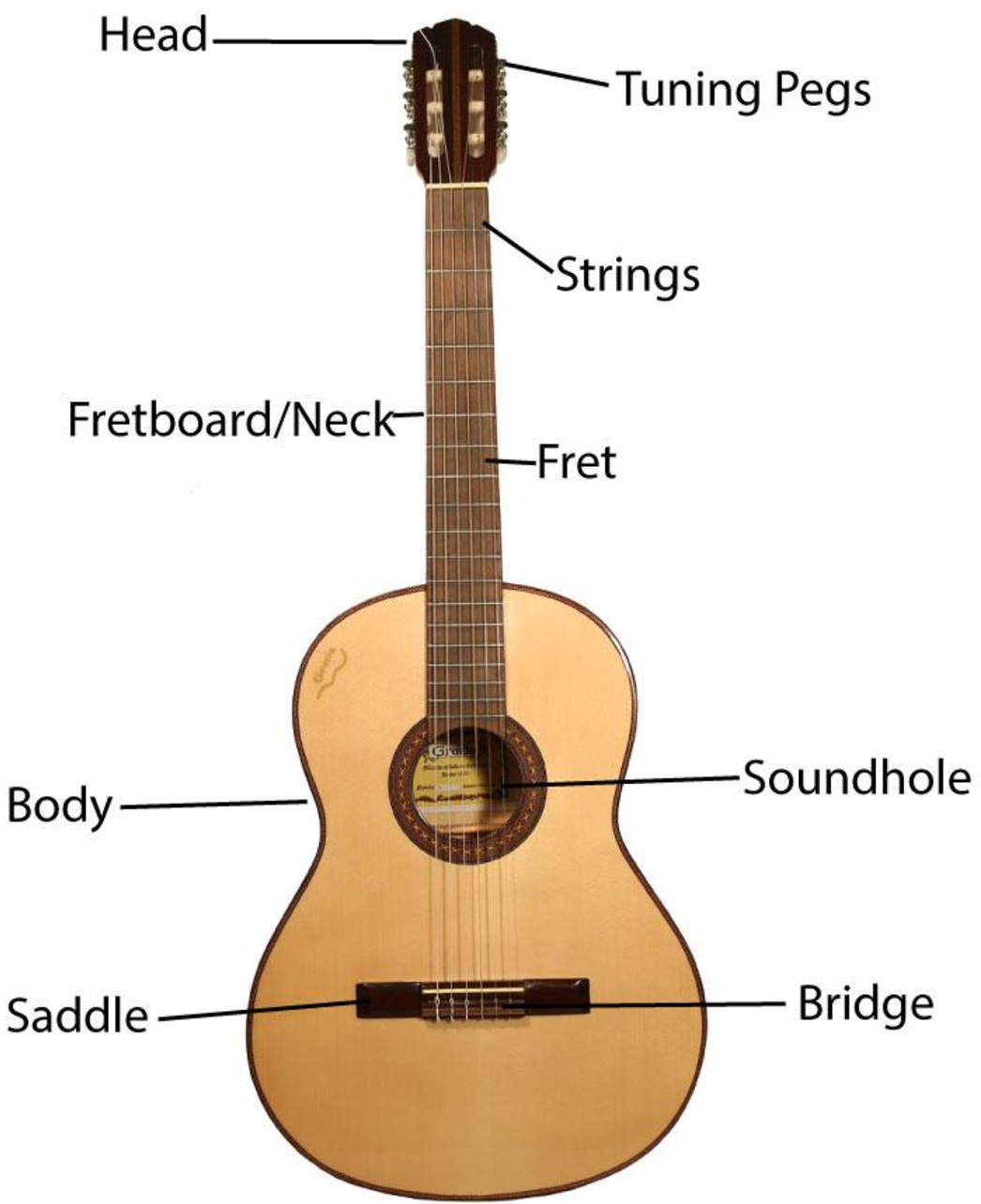
Electric vs acoustic guitars
Electric and acoustic guitars are both operated in essentially the same way. Picking or strumming open strings produce a certain set of pitches. Pressing a string down with your fingertip hard enough to touch the fretboard on the neck of the guitar will alter the string’s pitch. When multiple pitches are played at the same time, a chord is produced.
While electric and acoustic guitars are played basically the same way, there are a few key differences to note. The biggest difference is the way each instrument is amplified. Acoustic guitars rely on a natural system of amplification. Essentially, the sound generated by strumming or picking strings enters the hollow body of the guitar, bounces around and comes out louder. The solid-bodied electric guitar relies on a system of electro magnetic pickups to deliver sound to a device called an amplifier. Electric guitarists sometimes manipulate the sound of their instruments with special effects pedals that are operated with their feet.
The action, or distance between the fretboard and strings, is higher on acoustic guitars making them somewhat tougher to play than their electric counterparts for beginner students. Acoustic guitar strings are also slightly thicker and harder to press down than electric guitar strings. If you’re thinking about learning how to play the guitar, this doesn’t mean you shouldn’t learn on an acoustic. It’s an amazing instrument that is well the small amount of added difficulty to learn.
Make sure you’re in tune
 Whether you play an acoustic, electric or classical guitar, it’s hugely important that your instrument stays in tune. The lowest and thickest string on the guitar, which we’ll call the 6th string, is tuned to an E. The 5th string is tuned to A, the 4th is tuned to D, the 3rd is tuned to G, the 2nd is tuned to B and the 1st and smallest string is tuned to another higher pitched E. Here’s a visual guide to help you remember string names:
Whether you play an acoustic, electric or classical guitar, it’s hugely important that your instrument stays in tune. The lowest and thickest string on the guitar, which we’ll call the 6th string, is tuned to an E. The 5th string is tuned to A, the 4th is tuned to D, the 3rd is tuned to G, the 2nd is tuned to B and the 1st and smallest string is tuned to another higher pitched E. Here’s a visual guide to help you remember string names:
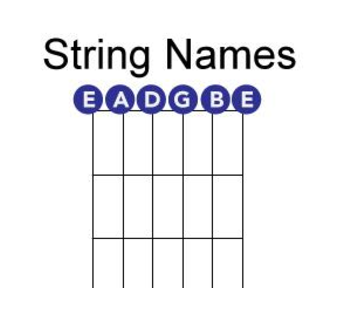
When you get a few months of playing under your belt, you’ll be able to tune your guitar by ear, but before that happens we recommend downloading a guitar-tuning app to your smartphone or purchasing a tuner from a music store. There’s many different ways to tune your guitar, but the tuning we’ve shown you here is called standard tuning, and it’s the tuning featured in most songs.
Get used to playing with a metronome
In many ways, starting completely fresh with the guitar puts you at an advantage over musicians who’ve played the instrument for years. You’re essentially a blank canvas right now, and this gives you the ability to forge a path filled with good habits and correct playing techniques. One of the best habits you should form right from the beginning of your playing is to practice consistently with a metronome. A metronome is a device that produces customizable beats of rhythm. It’s a great way to help develop your rhythm-playing skills, and we recommend playing everything from simple exercises to chord progressions to the slow, steady click of a metronome. There’s plenty of cheap or free metronome apps you can download straight to your phone.
Start by learning how to play individual notes
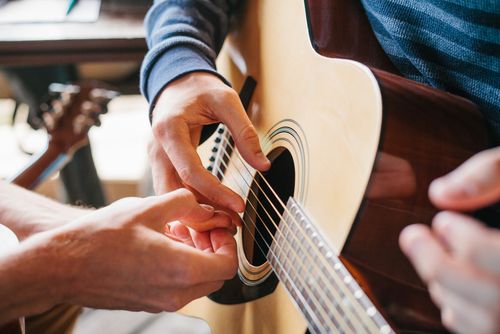 When you’re ready to start learning guitar, the first thing you’ll need to do is to learn how to play individual notes. You won’t be able to play complicated material like riffs or chords until you learn how to get your left and right hands acquainted with the strings and fretboard of the guitar.
When you’re ready to start learning guitar, the first thing you’ll need to do is to learn how to play individual notes. You won’t be able to play complicated material like riffs or chords until you learn how to get your left and right hands acquainted with the strings and fretboard of the guitar.
Before you attempt to press your fingers down on the frets, try picking individual open strings. For the purpose of this article, we recommend that you use a hard pick while learning how to play the guitar. Here’s an easy exercise to help you get started playing open individual notes. Each line here represents a string. If you see a “0,” it means to play the string open. Other numbers symbolize different frets to be played on the strings. This system of notation is called tablature.
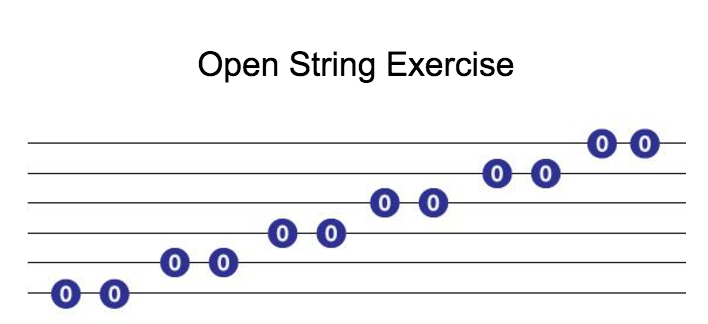
Get used to the alternate picking method
For the open string exercise and every other exercise, riff or scale that requires you to play individual notes, we recommend using the alternate picking method. Alternate picking is when your right hand picks one note down and then upward on the next note in a repeating sequence. This method of picking harnesses the natural momentum generated by the motion your hand makes while playing guitar. Most beginner students prefer to pick in one exclusive direction, but that’s considered to be bad technique and you’ll probably have to correct it in your playing down the line.
Once you’ve tried the alternative picking method out on some open strings, move on to learning how to press your fingertips down on the fretboard hard enough to produce pitches. Many students struggle with this for a few reasons. Firstly, unlike other instruments, learning how to produce notes on the guitar causes beginner students a slight amount of pain and discomfort. It generally takes two to three weeks for new students to develop what we call callouses on the tips of their fingers.
Callouses are leathery buildups of extra skin that your body naturally develops to protect itself. Most people get them on their feet from walking around in flip flops during the summer. For kids especially, it can be a difficult experience to play the guitar before developing these callouses, but playing the guitar is virtually painless after a few weeks of steady practicing.

Some students of all ages struggle to press their fingers down in just the right way to produce pitches long after they’ve already developed callouses. It takes time and focused practice for a student to get their bearings as far as producing pitches on the guitar goes. This next exercise is a good introduction to playing individual notes on the guitar. It’s a chromatic scale, which means that it’s a series of notes that go up and then down step by step.
You’ll start by playing open 6th string. Then, press your left hand’s index finger on the first fret of that string. Try placing your finger at the top of the fret near the metal bar. From here, you’ll press your middle finger on the second fret, your ring on the third and then your pinky on the fourth fret. Repeat this sequence on every open string until you reach the 1st string’s fourth fret. Then, repeat everything you just did backwards until you reach the open 6th string again. Remember to use the alternate picking technique in this exercise. This is a great way to deliver the strength, flexibility and technique that you’ll need to play riffs and other scales to your hands.

Add music theory to everything you do
Before you knock your computer off the table and head for the hills, hear us out. Music theory is not your enemy! It’s a massively helpful tool that can give you knowledge and insight when it comes to not only the guitar but for all of music. The word “theory” is sort of a misnomer here because the ideas taught in music theory serve more as a universal language between musicians than a theory of ideas. It’s a smart idea to think about everything you play on the guitar in terms of theory from the very beginning of your practice with the instrument. Yes, you’ll be able to learn plenty of chords, scales and riffs without a theory background, but learning just a few music theory basics will put everything you’re already needing to learn into a helpful new context. This is a great tool you can master right now that some guitarists who’ve been playing for decades still haven’t learned.
Develop a note interval vocabulary
In music theory, the relationships between notes are called intervals. Different harmonies or chords are created when two or more intervals are played at the same time. Here’s a brief description of every interval found in music. We’ll give you visual guides for the more prominent intervals found in guitar parts. The distance between intervals is measured by half-steps which are represented on the guitar by single frets.
Minor 2nd (1 half-step) – This interval is extremely tense and dissonant. It’s famously featured in the theme from the movie Jaws. Duh-duh. Dud-duh. Duh-duh-duh-duh-duh-duh-duh-dud….
Major 2nd (2 half-steps) – Major 2nds feature a unique major sound that’s somewhat dissonant. They’re featured in the opening melody in the “Happy Birthday” song and also in the first chord of Chopin’s “Chopsticks.”
Minor 3rd (3 half-steps) – These intervals sound pensive and morose to most people. The first two notes of English folk song “Greensleeves” are a minor 3rd, and the minor chords we’re about to learn include them as well.
Major 3rd (4 half-steps) – Major 3rds are the main component in major chords. One is found in the opening melody of the song “When The Saints Go Marching In.”
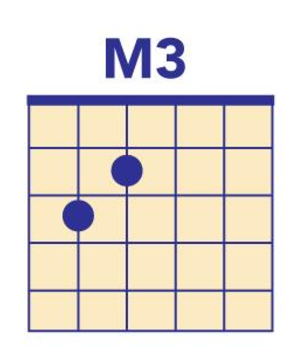
Perfect 4th (5 half-steps) – For this interval, think of two first notes in opening melody of the “Wedding March.” Perfect fourths feature a major tonality.
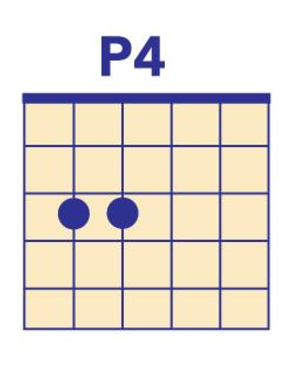
Tritone (6 half-steps) – These intervals sound so dissonant that they used to be named the “Devil’s chord.” These days, they’re used in everything from blues music to the opening melody in the Simpsons theme.
Perfect 5th (7 half-steps) – The perfect 5th just might be the most important interval on the guitar and in music. This interval is easily heard in the main theme from the Star Wars movies, and it’s a major part of all basic chords and featured in many riffs and melodies. Perfect 5ths makeup what are called power chords on the guitar.
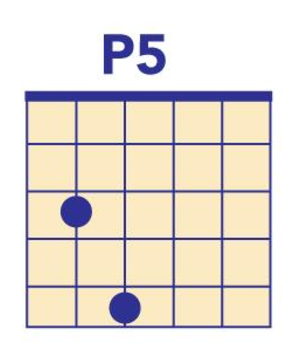
Minor 6th- (8 half-steps) – Minor 6ths are featured in many vocal melodies. The most popular one right now is probably the word “fi-re” sung in Fun’s pop anthem “We Are Young.”
Major 6th- (9 half-steps) – If you’ve ever watched the NBC network for an extended period of time, you’ve probably heard this interval without knowing it. It’s featured in the “N-B” part of the network’s main theme music. In terms of guitar parts, this interval has become popular with indie rock bands. Composers and songwriters favor this interval because it sounds both major and minor.
Minor 7th- (10 half-steps) – This interval is featured in many blues riffs and vocal melodies. It sounds minor, but not as morose as the minor 6th or 3rd intervals.
Major 7th- (11 half-steps) – Major 7ths, which can also be heard as minor 2nds, can either sound dissonant or consonant depending on the context of the music surrounding it. It can be heard in the chorus melody of A-Ha’s famous song “Take On Me.”
Octave- (12 half-steps) – This interval can be confusing because it features two different pitches that share the same note name. An octave is the relationship between one note another one 12 half-steps above or below. The song “Somewhere Over The Rainbow” from the movie Wizard of Oz features this interval in its opening notes.
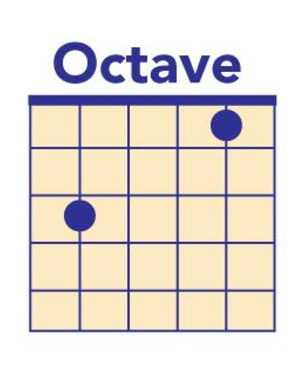
Memorize as many chords as you can
Now that you’re familiar with intervals you’re ready to learn how to understand, build and play chords on the guitar. Like we mentioned before, chords are just different combinations of intervals played at the same time. In cooking, specific combinations of ingredients will get you different sorts of food. Chord-building is a similar process to cooking in the fact that slight changes in intervals result in drastically different chords. There’s three basic chords you have to get familiar with for learning guitar:
Major- Root (starting note) + Major 3rd + Perfect 5th
Major chords sound full and complete.
Minor- Root + Minor 3rd + Perfect 5th
Minor chords sound sad and dramatic.
Diminished- Root +Minor 3rd + Tritone
Diminished chords sound incomplete, dramatic and dissonant.
Different combinations of these chords for the chord progressions we hear in popular, art and classical music. Here’s an example of a simple chord progression:
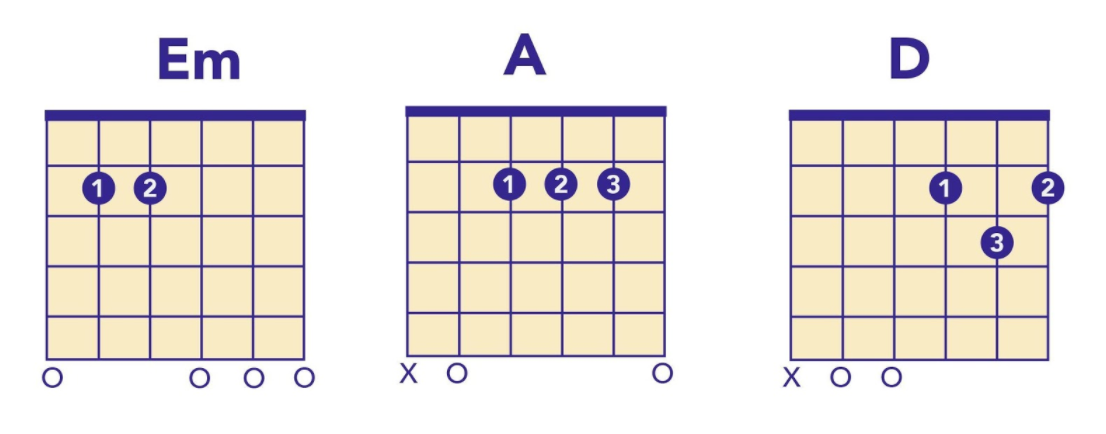
Start with simple strumming patterns
Once you’ve memorized a few chords, try playing them with a simple strumming pattern. In this first example, you’ll strum straight down for every beat. After four beats, try transitioning to another chord without pausing:
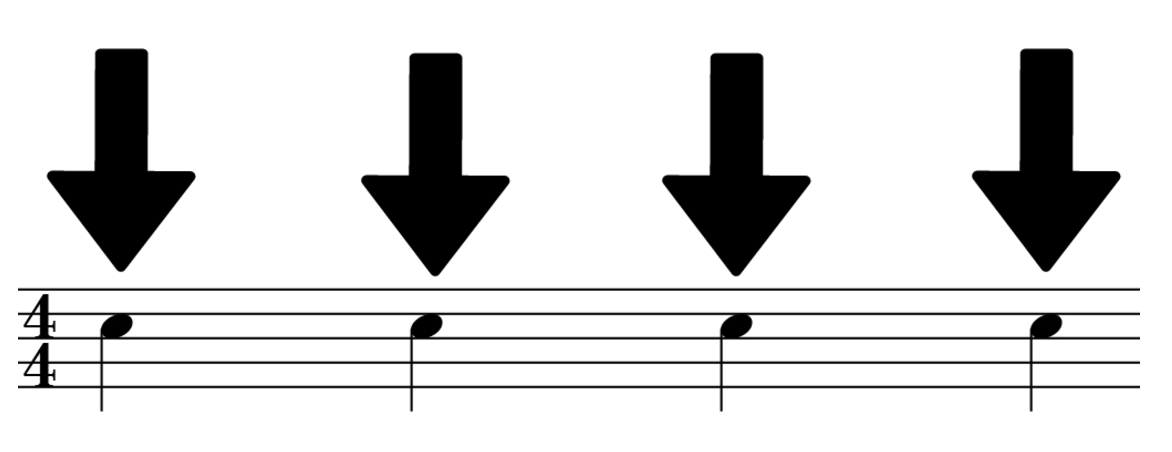
This next strumming pattern uses eighth notes. Eighth notes are played directly on and between main beats. Strum up and down for this exercise:

Finding the right teacher
We hope these tips and exercises have been helpful for you, but if you want to make real, meaningful progress towards learning guitar, we recommend finding a great teacher to work with. No article or Youtube tutorial can substitute what you can learn from a patient and experienced professional teacher. For more articles about the world of music, check out the Musika Lessons blog.

